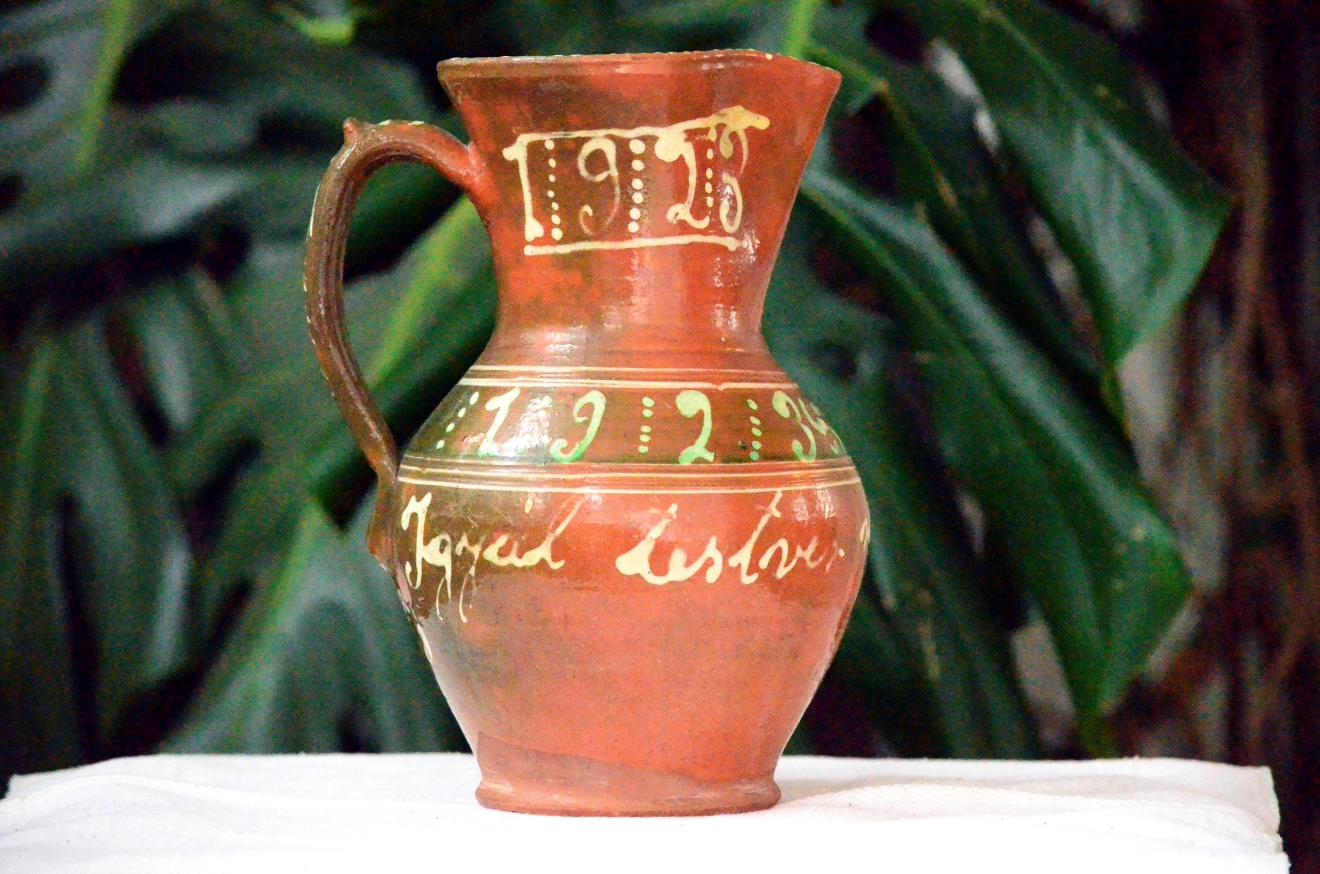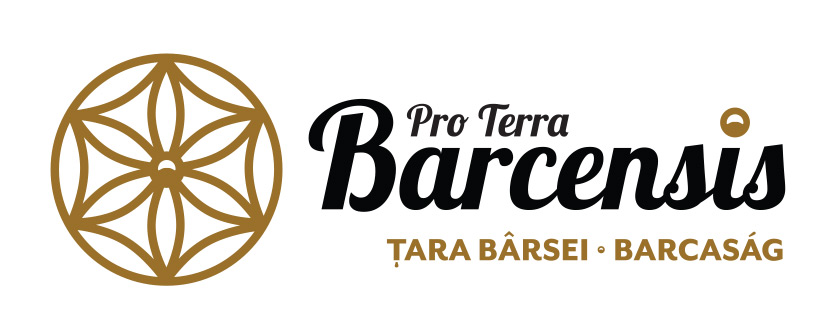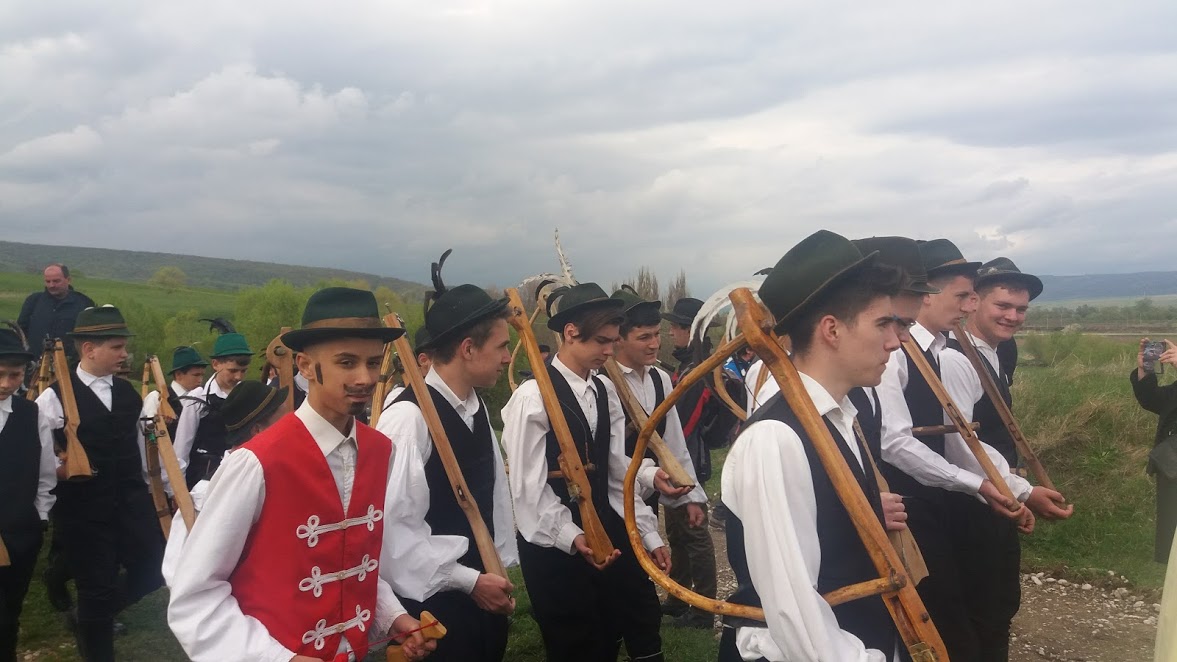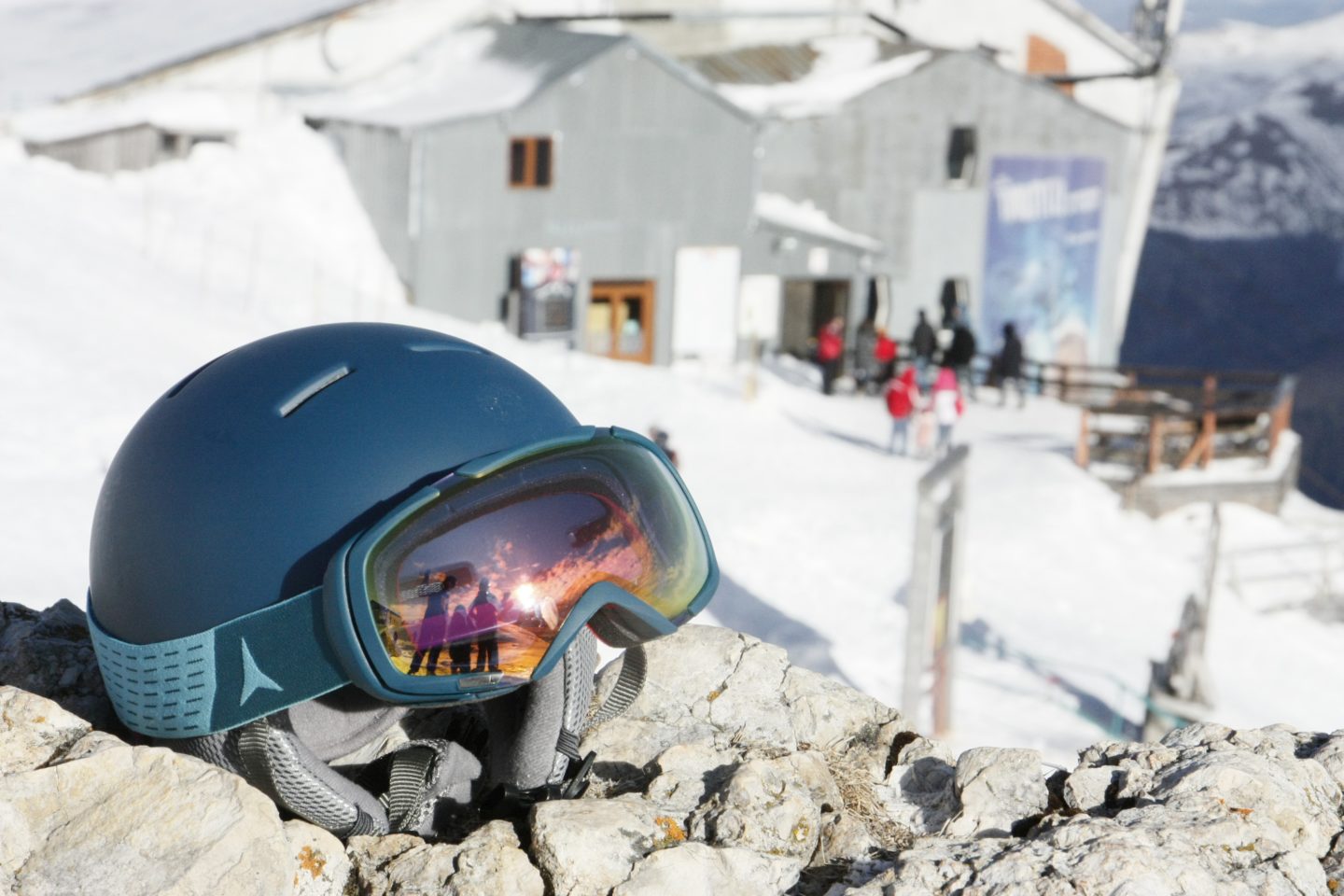
Pottery in Satu Nou (Barcaújfalu)
Satu Nou (Barcaújfalu) the biggest pottery center in Țara Bârsei (Barcaság) was once, today there are few or no pottery pots.
In the morning of Saint Michael, the sun itself, rising as if playing above Comloș and Estera from Ciucaș Mountains, caressed Vásár (Fair) Street. Although it was very early, in the center of Cernatu village gathered a very colored crowd. Each person was agitating in front of his/her own tent, arranging the tables, the carriages loaded with different products, coming in an endless row. The fair was starting. In the paddocks located at the end of Vásár (Fair) Street cattle, pigs, sheep, horses were run. The Transylvanian Saxon women of Transylvania were unpacking beans, onions, radishes, carrots and the Szekler women from Coșeni zsömök (tight headed)[1] winter and summer cabbage, turnips, radishes, red Szekler onion. The fair was big, 50 carriages filled with cabbage also arrived. The local petty traders were selling from Wallachia. Those with vegetables also brought fowl, oat and wheat. Carriages with lime were also arriving from Purcăreni and on kompona (balance)[2] hanged in the back of the tint, the merchants were selling quicklime at kilogram. Next to these, in the order of their arrival were sitting the carriages loaded with planks, wood products from Budila, Teliu, Ciuc, Zagon. The locals were selling fire wood and hay. Some of the Transylvanian Saxons from Cașolț were selling flax oil, namely selling cakes for piglets and calves. The carriages with clapboard, stairs, wooden vases, wooden rakes or forks had to be present.
The beautiful homemade fabrics from Seven Villages were opening the row of clothes. The tailors and furriers were arranging their products and next to them the Romanian women were selling cloth, rugs, woolen table cloths. As refreshers, the Szekler women were offering mugs filled with mineral water and vinegar to the thirsty ones and the cow or buffalo cow buttermilk was sold from the bucket. Those from Scheii Brașovului were offering oranges, lemons, fruits. Others were attracting the buyers with cheese and salt fish. Several women from Three Villages were selling fresh bread placed on the ground on a bag or they were offering honeycombs cut in small cubes to children.
The sweet merchants represented the different color stain in the fair. They were selling candy or gingerbread on sticks or packed in colored paper. Parents were pleasing their children with hussar-shaped gingerbread made in Târgu Secuiesc and the boys were offering heart-shaped gingerbread with mirror in the middle to their lovers. Handkerchiefs, kerchiefs and other objects adequate as gifts were very popular. The gypsies from Seven Villages were especially selling mushrooms, brooms but the travelling comedians and foreseer, from whose box a parrot was extracting the note foreseeing the future, were also present. While the adults were drinking treat after a successful fair, the children were playing in the carousel located in the summer garden.
A high-pitched jingle interrupted karicsolás (screech)[3] of chicken when a carriage from Satu Nou stopped near the vegetable growers and the craftsman potter started to unload and arrange his products. “Csango from Satul Nou, maker of mugs!” – a child running around was teasing him loudly. Two more carriages of potters arrived in a little while, one bringing Romanian local ceramic products from Tohanu and the other from Brașov, with Transylvanian Saxon ceramic products.
The more the sun was rising on the sky, the more the fair was filling with people and in the already almost unbearable noise, a man around 60 went to the potter from Satul Nou. The ironed pants, the slightly dusty travelling cloak, the hat and the cane were signs that he was coming from afar. He arranged his monocle on the nose and started the conversation with the craftsman. He was interested in the ceramic vases from Burzenland, he was writing a study of decorative art. After the greetings and usual formalities, he passed directly to questions.
– Let’s start first with the raw material. With what materials you are working, how do you prepare them for processing?
– The material is brought from the border of Codlea Locality – said the craftsman – Ábrahám’s soil is the best. We bring it in carriages. You know, the soil from the other territories is too fat, it must be mixed with sand. Good soil is found on the mound of the New forest. We bring it in the summer, we store it in the basement. We put it in the yard in the winter so that frost chops up the clods. Before processing, we take it to the basement, then we wet it for days, we stamp on it, we beat it well with the shovel.
– Before you place it on the wheel, what do you do? – asked the stranger while taking notes.
– We cut it with the hoe at the size of a bucket, we take it up and we push it over the kneading table, then we flatten it with the stick, we knead it, then we flatten it again by hitting it 3-4 times. Later we scrape[4] it, then we knead it like a dough. When it has a good consistency, regölés[5] is next. The ceramic formation is carried out with the fingers submerged in focsosvíz (focs water)[6] and with a wooden knife, then finished with bőröző (plotog)[7]. Meanwhile, we are wiping our hands on gagya (pants)[8] greased with clay.
– How are the vases dried?
– The drying is made in the workshop. We turn them with their száda (mouth)[9] upside down. On the big pots we can apply the handles after half an hour, the small ones after two days. We check with the hand how soft the material is and this is how we apply the handles.
– Now tell me about glazing!
– This is done by women. We have two types of pots, those we bring to the fair and those used at home. For whitening or angobálás[10] of ornamental vases brought to the fair, we use white soil from Ciuc or Cristian. The thicker lines are drawn with the horn[11], the thinner ones with pincuska[12]. Our home pots are brown with spots. The pots from the fair are rater Transylvanian Saxon: white and blue. Their decoration is followed by zsöngézés[13]. Then we glaze them.
– Where do you get the glaze from?
– This one from stores. We also bring it from Baia Mare many times. One measure of glaze is mixed with two measures of sand from Ariușd or glass powder. We also put békasó[14] many times. We crush the glaze until it no longer scrapes the nail if we press it between our nails. We add burned copper powder to the green glaze, iron powder to the purple one. We have 4–6 mázalótál (glazing vases)[15] for preparing different colors. The smaller vases are submerged in glaze and on the bigger ones, turning them upside down, we pour the glaze with fakalán (glazing wooden spoon)[16]. We do not glaze the bottom of the vases so as not to stick to each other when they are made one on top of the other. The defects at the first burn are corrected with fódozómáz (patchwork glaze)[17]. The color of ornamental vases and kávoly[18] is given by azure. This cobalt is colorless but it becomes blue after burning. We buy it already made from Brașov. It is imported and not any potter can work with it. It is not simple.
– What is the specific model from Burzenland?
– You see, our scoops are 15-26 cm tall, the ornaments are abundant, the vase is divided in three parts by vertical lines. The main model will be on two parts, the flower weaving upward, at the end of which is a snail or rosette. The remaining place is filled with a rose, tulip, lily-of-the-valley, dots or crab leg. The crab leg is specific to Satul Nou. The model is surrounded by straight or curved lines. The handle is also decorated with a curved line. The new models are: the rose,
chrysanthemum, daisy, carnation, grapes.
– Let’s also see a Transylvanian Saxon pitcher – said the stranger and walked to the next carriage.
– Here is this one – the potter from Satul Nou showed one. You know, the cup from Brașov is bigger and is not as narrow as ours. The vase is divided in four parts and it is decorated with the brush.
– Indeed, the decoration gives the impression of rococo, it is ordered, the division is very precise.
– Yes, ours is random, it imitates nature. The dots, filling flowers are missing from the Transylvanian Saxons. The decoration is more abstract, more massive. We know the name of each flower, leaf. Our motifs are similar to those on decorated eggs. The Transylvanian Saxon pots have blue models. The pots decorated with multiple colors, brown, green, black are frequent in our case. We make those with multiple colors according to the Hungarian liking and the blue ones according to Transylvanian Saxon liking. The ornamental elements, the colors of decorative trays and plates, pots, cups, pitchers, borkán[19], mash trays, washstands are similar to those of the cups. We also use the decoration with green or white soil. We also have white and black pots. Many findzsa[20] and goat milking cups[21] are made in Satul Nou, with the upper part painted white and the lower part black. Romanians around Sibiu buy especially these ones. The craftsmen from Brașov, due to the German, Dutch, Italian connections naturalized new procedures. The clay is exploited from the periphery of the town and kaolin from Dealul Melcilor (Snails’ Hill). The most frequent ornamental motifs of the Transylvanian Saxons are: sunflower, tulips, beanstalk, acacia leaf, different geometrical shapes and chessboard.
– So there are differences between the patrimony of models and technique. Hungarians work with horn, Transylvanian Saxons with the brush. Let’s see now a Romanian pot.
– Romanian potters from Burzenland live in Tohanu, this is their largest center. It is also valid for them that they were making pots not only for their personal use but also for sale to the Transylvanian Saxons from Brașov, so these are also white and blue. The characteristic model is the star. But they also use the spiral – started to tell the craftsman from Satul Nou and they immediately moved on to the third carriage. – The edges of the plates are slightly curved and the locust and sunflower leaf appears as ornamental element. However, the tulip and tree life are also common. Romanians make also the vases for alms gift[22] and pots for moși[23]. Those from Tohanu work with yellow clay, which becomes red like the brick after burning. The decoration is made by scratching or writing. The part immediately below the bigger vases is decorated with white simple geometrical lines, the smaller ones with lines, dots, circles, spirals made of green or yellow glaze. The models with plants are applied especially on the lower part of scoops. On old vases, the simple model formed a belt, now many elements taken over from us are present on the new ones.
– After this short comparison, let’s come back to Burzenland. What other interesting things do you make?
– We make this, that and the other. Some make only toys. Mountains, tutika[24], horses, pigs, bears, birds, ornaments on roofs, earthenware, everything. The biggest vase I have ever made was a pot for cabbage rolls of 100 liters. Nagy, András and György brothers made it from two pieces. In 1925 Székely Márton made a vase for each wedding participant.
– Just one more thing to clarify: speak about the kiln!
– The burning place of pots was built on a closed space. Here we also store the ceramics which is ready. The oven has the shape of a truncated pyramid, inside with rounded corners, built from unfired brick. Its base has 2 m and the upper part is 1.5 m. The height is the same. We start loading the kiln in the morning so that we can finish until the evening. After loading, we fill the kiln mouth with pot fragments. We make a fire near the kiln and we place it under the boiler bringing it near slowly. We make a fire with beech wood without knots, cut into small pieces. At the end, we place the wood in a pile so that the temperature decreases gradually. We do not open the door of the kiln. From time to time we clap above the kiln and if white sparks appear, the end of burning is getting close. It lasts 5-6 hours until no flames appear on the upper part of the kiln. The burning must not be forced because the colors are changing. We let the kiln to cool down until the next morning.
–Thank you for discussions, God bless you! Come, let’s enter into the Beer garden, let’s seal what we said! – said the stranger putting his notepad, but it is very likely that they had more warm discussions about the village life in addition to one-two glasses …
_____________________________________________
[1] Zsömök: tight headed noun
[2] Kompona: balance noun [Mijl.] Rom.: cântar (<Szl. konpona).
[3] Karicsol: to cackle verb.
[4] With a knife made of a broken scythe, it is cut in narrow strips in order to remove impurities.
[5] Clods are broken into pieces large enough for one vase.
[6] Focs: a liquid clay paste, used by the potter during his activity on the pottery wheel for lubricating his noun
[7] Bőröző :piece cut out of lamb skin, two-fingers wide and one small palm long noun
[8] Gagya: pant noun [West.].
[9] Száda: mouth noun
[10] The vase made on the pottery table is greased with a thin clay paste of a certain color so that its surface is smoother.
[11] Corn: horn for writing noun
[12] Pincuska: brush noun
[13] Zsöngézés: first burn verb
[14] Békasó: crushed flint powder noun
[15] Mázaluótál: the vase in which the glaze is kept, mixed noun
[16] Kalán, kalány: spoon noun [Mijl.].
[17] Fódozómáz: glaze which can correct mistakesnoun
[18] Kávoly: earthenware noun
[19] Borkán, borkány: jar noun [Mijl.] Rom.: borcan (<Bul. burkan).
[20] Findzsa, findzsiacska: cup and plate, saucer noun [Mijl.].
[21] Csipor, csiporka: cup noun [Mijl.].
[22] Food, drink offered with the occasion of burial feast or memorial meal. Rom.
[23] Black pots for the ritual called “vases for alms gift”, according to the Orthodox Romanian holiday “Moși”, when food is given to poor people in the first day of November.
[24] Tutika: whistle noun.
Spiritual heritage
Rooster shooting - the general tradition of Barcaság (Țara Bârsei) - remained alive today only a...
Read moreA bouquet of colors from the long skirt to the popular Saxon harbor, which in turn was taken over by...
Read moreIn addition to logging and farming, the main occupation of the Csángo's was carriage, and they carr...
Read moreThe "Borica" dance from the Seven Villages is an archaic man dance. Today it is practiced only in...
Read moreVillage

Barcaújfalu, Villa Nova, Neudorf, Satu Nou. Village at 21 km north-west of Brașov. In 2002, out of...
Read moreLocal products
Programs
If you visit the Bârsa region (Brașov county) you can enjoy the ski slopes in the alpine area in t...
Read moreIn the heart of Barcaság - Țara Bârsei, located at the base of Mount Postăvaru, Poiana Brașov i...
Read more





